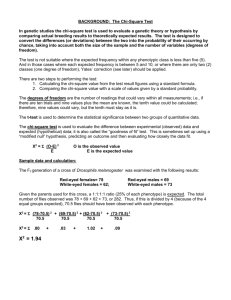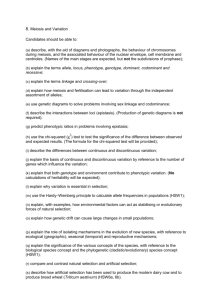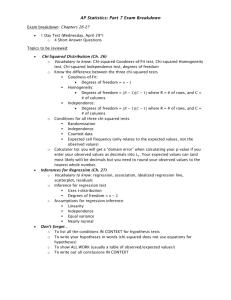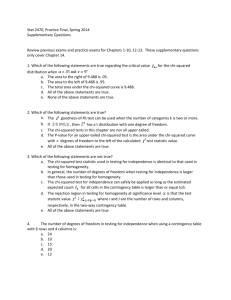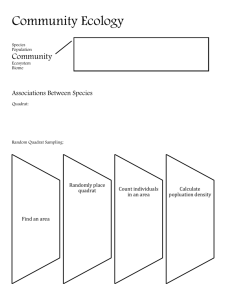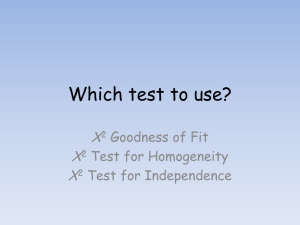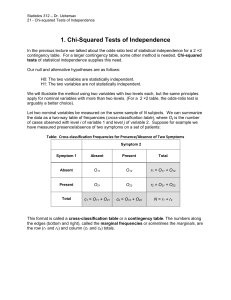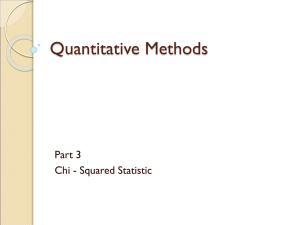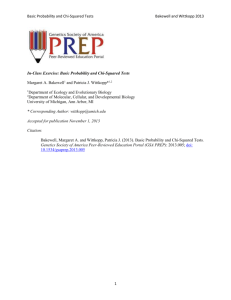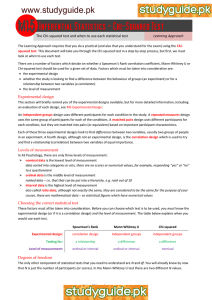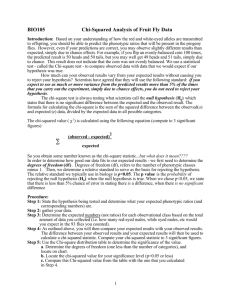Chi- Square
advertisement
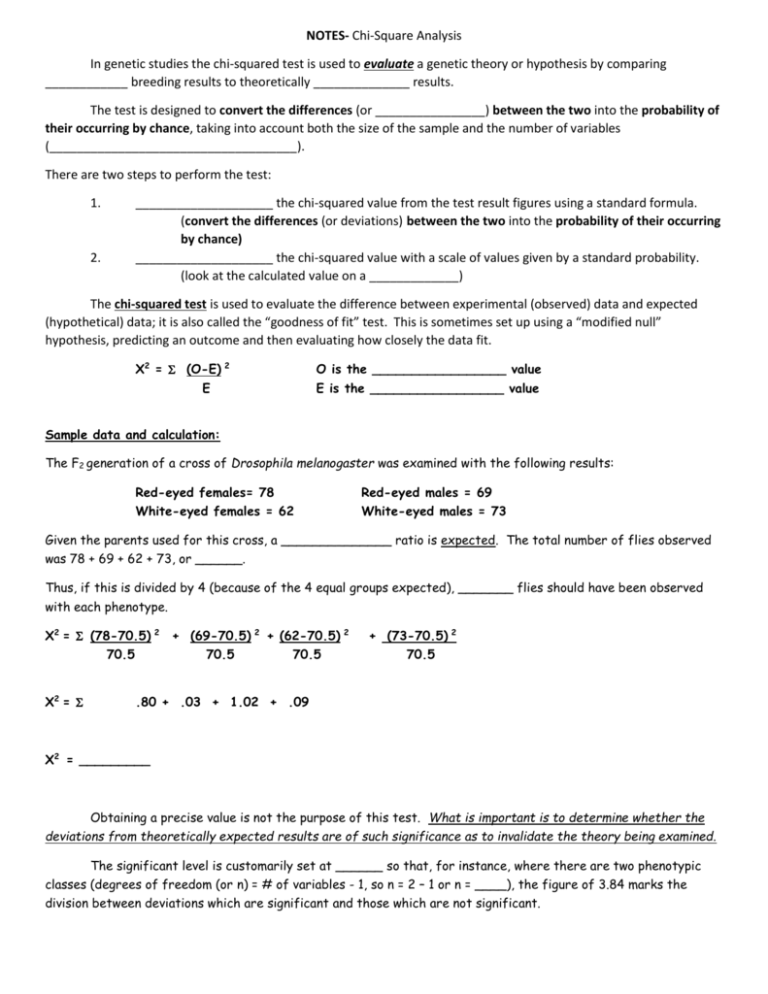
NOTES- Chi-Square Analysis In genetic studies the chi-squared test is used to evaluate a genetic theory or hypothesis by comparing ____________ breeding results to theoretically ______________ results. The test is designed to convert the differences (or ________________) between the two into the probability of their occurring by chance, taking into account both the size of the sample and the number of variables (____________________________________). There are two steps to perform the test: 1. ____________________ the chi-squared value from the test result figures using a standard formula. (convert the differences (or deviations) between the two into the probability of their occurring by chance) ____________________ the chi-squared value with a scale of values given by a standard probability. (look at the calculated value on a _____________) 2. The chi-squared test is used to evaluate the difference between experimental (observed) data and expected (hypothetical) data; it is also called the “goodness of fit” test. This is sometimes set up using a “modified null” hypothesis, predicting an outcome and then evaluating how closely the data fit. X2 = (O-E) 2 O is the _________________ value E E is the _________________ value Sample data and calculation: The F2 generation of a cross of Drosophila melanogaster was examined with the following results: Red-eyed females= 78 White-eyed females = 62 Red-eyed males = 69 White-eyed males = 73 Given the parents used for this cross, a ______________ ratio is expected. The total number of flies observed was 78 + 69 + 62 + 73, or ______. Thus, if this is divided by 4 (because of the 4 equal groups expected), _______ flies should have been observed with each phenotype. X2 = (78-70.5) 2 70.5 X2 = + (69-70.5) 2 + (62-70.5) 2 70.5 70.5 + (73-70.5) 2 70.5 .80 + .03 + 1.02 + .09 X2 = _________ Obtaining a precise value is not the purpose of this test. What is important is to determine whether the deviations from theoretically expected results are of such significance as to invalidate the theory being examined. The significant level is customarily set at ______ so that, for instance, where there are two phenotypic classes (degrees of freedom (or n) = # of variables - 1, so n = 2 – 1 or n = ____), the figure of 3.84 marks the division between deviations which are significant and those which are not significant. **Using the sample data, for 4 phenotypic classes (n = ____), a chi-squared value of _______ is obtained which lies between values indicating probabilities of 50% and 80%; let’s say _________. This indicates that in a large number of similar tests deviations as great as, or greater than that observed, would occur in about 60% of those tests by chance alone. This is greater than the significant 5% level and we can conclude that this test does NOT invalidate theoretical expectations. Now you try!… Problem: Using Mendel’s methods in crossing pea plants, the following results were collected in a cross between two plants heterozygous for seed shape and seed color (RrYy X RrYy). (R = round, r = wrinkled; Y = yellow, y = green) RESULTS: 547 yellow-round; 193 green-round; 195 yellow-wrinkled; 65 green-wrinkled. a) What are the expected phenotype ratios in the offspring? _____ yellow-round; _____ green-round; _____ yellow-wrinkled; _____ green-wrinkled b) In 1000 offspring, how many are expected of each phenotype? _______ yellow-round; _______ green-round; _______ yellow-wrinkled; _______ green-wrinkled c) Perform a Chi-Squared test with the results obtained. Do these results invalidate theoretical expectations? **Using the sample data, for 4 phenotypic classes (n = _____), a chi-squared value of _________ is obtained which lies between values indicating probabilities of 80% and 95%; let’s say _________. This indicates that in a large number of similar tests deviations as great as, or greater than that observed, would occur in about _________ of those tests by chance alone. This is greater than the significant 5% level and we can conclude that this test does _________ invalidate theoretical expectations. (We CAN ______________the results!)
